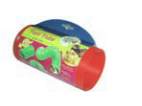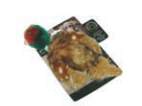Basic HTML Version





Arthritis
by
Stuart Brown BVSc MRCVS
Glenthorne Veterinary Group
Inflammation is usually a response to degenerative
processes or due to damage to the joint, for example
trauma or fractures. Regardless of the underlying
cause the outcome is the same; osteoarthritis results
in pain in the joint, swelling and stiffness, and in the
later stages it is not unusual to see deformity develop.
If there is an obvious underlying cause (for example
ruptured cranial cruciate ligament) then treatment of
that cause can lessen the signs or even completely
alleviate them all together. For this reason, early
intervention and correction of the cause is indicated.
However, it is a simple fact of life that osteoarthritis is
common in older patients particularly when there are
complicating factors such as obesity. Arthritis is not
the preserve of large breed dogs alone though.
Indeed it is very common to see older cats with quite
severe deforming arthritis.
There is no single ideal treatment for osteoarthritis,
although in many cases therapy focuses on the use
of non-steroidal anti-inflammatory drugs (NSAIDs),
with other regimes added to suit the patient.
Hydrotherapy and physiotherapy can be extremely
useful for reducing the stiffness of inflamed joints
and restoring normal range of movement, often in
conjunction with a NSAID.
There are many different NSAID products available,
all with slightly different pharmacological properties
and it is not unusual to find that one works better in
some patients than others. These products are
generally given orally on a daily basis (although one
is given just once a month!). They are absorbed
quickly so the response is usually rapid.
There is much evidence to support the use of these
products on a long-term basis; pain is reduced
considerably compared with patients given
intermittent or short-term courses of the medications.
The range of movement available to the patient is
greatly enhanced allowing greater freedom to exercise
thus improving fitness and crucially helping weight
management. When compared to the human patient,
safety is much greater too! There is little evidence of
cumulative side effects or toxicity particularly to the
liver, kidneys and gastrointestinal system.
Side effects from this class of drugs are typically
seen within the first few days of a course and include
inappetence, vomiting or diarrhoea, although these
will usually resolve within a few days of stopping
administration. If any of these adverse effects are
seen, and particularly if blood is present you should
stop medication and notify your vet.
Arthritis literally means inflammation of the joint.

